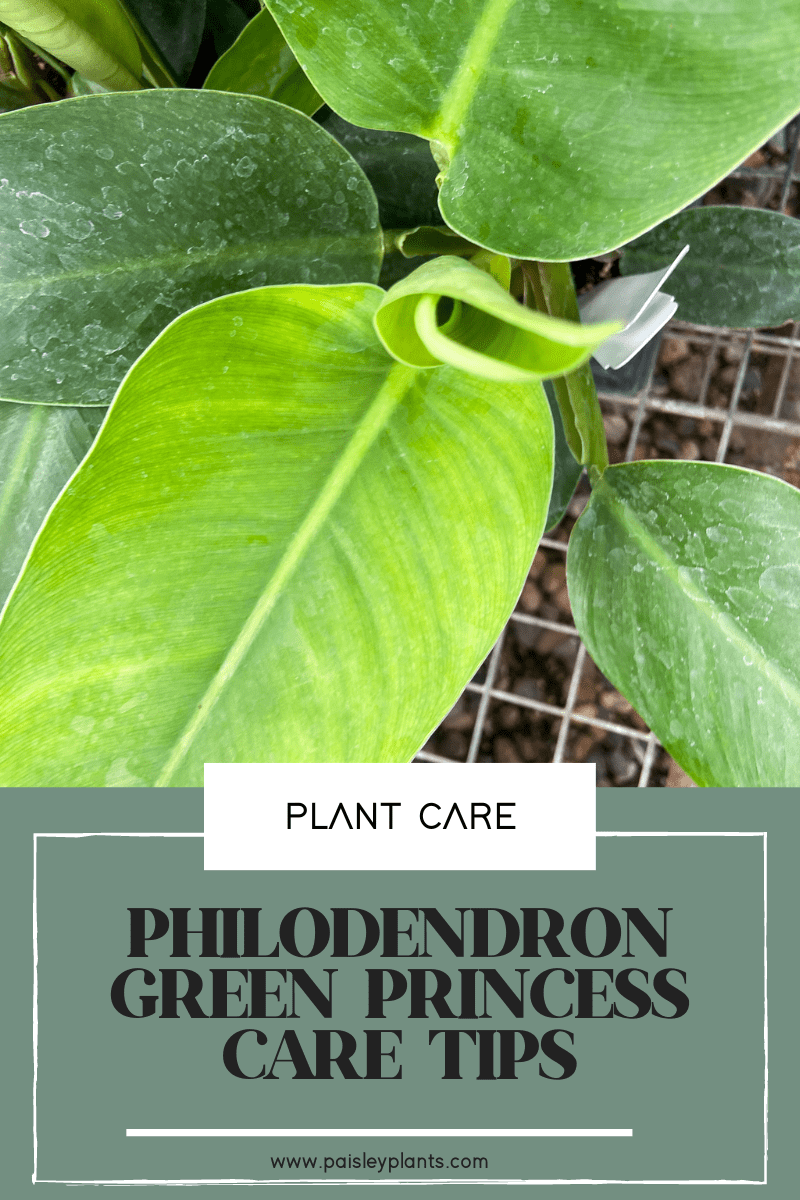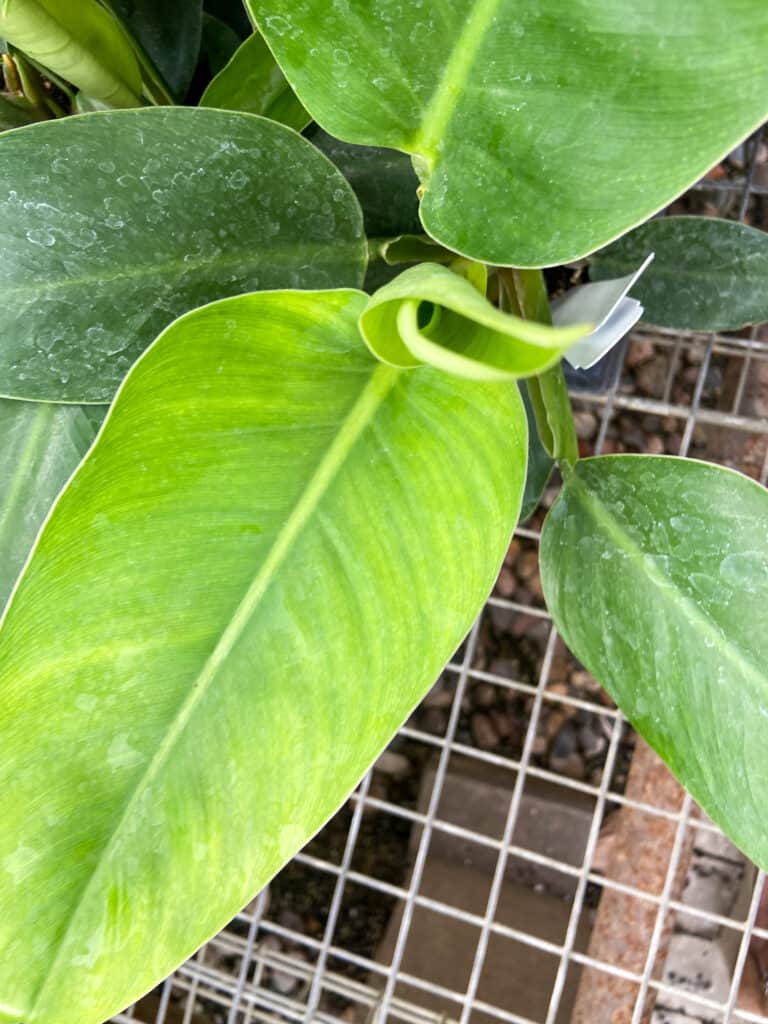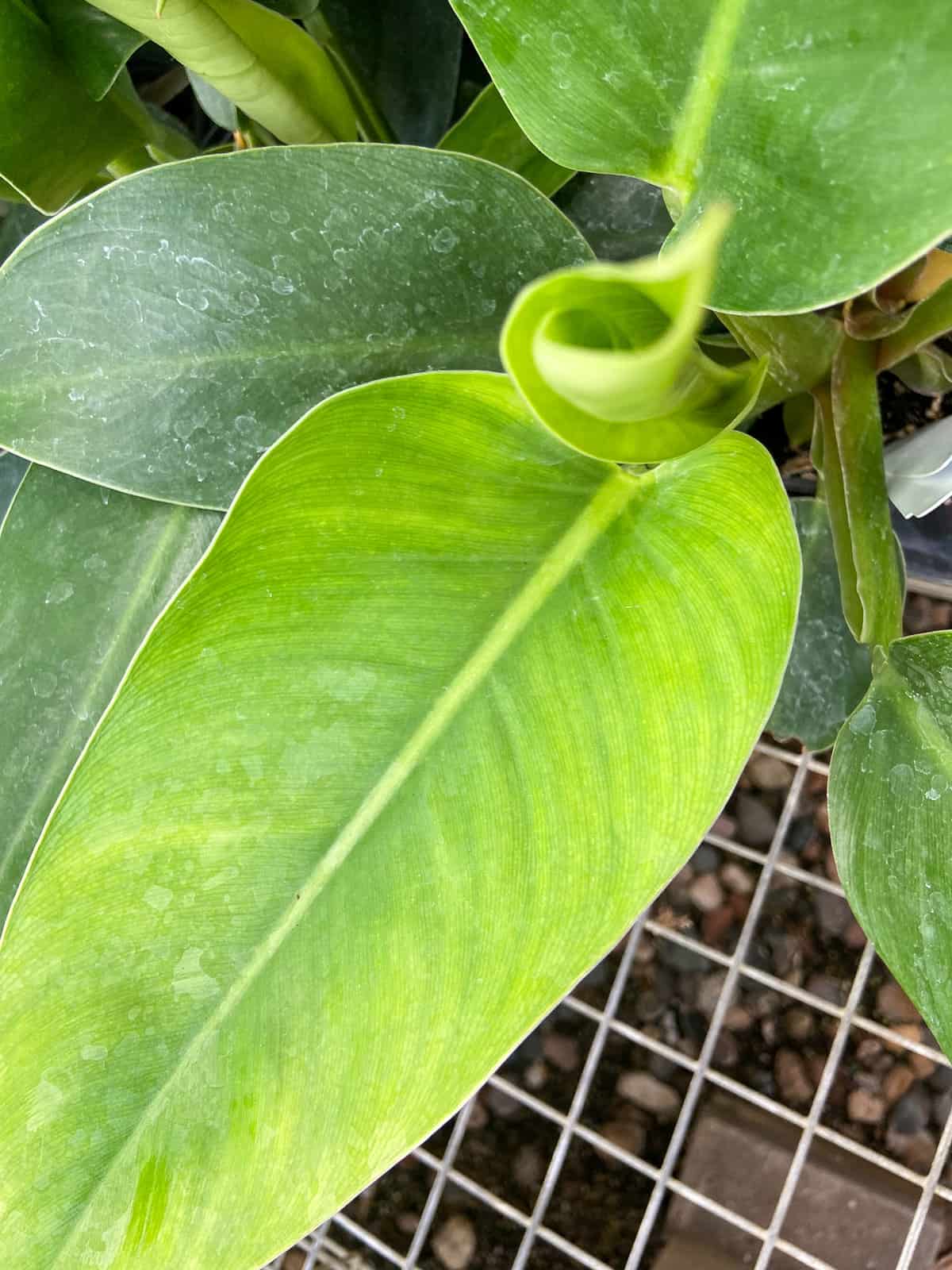Bright, fun, and beautiful: the philodendron golden goddess adds a splash of color to the home. The best part is how easy it is to have a colorful, tropical plant in your home.
Read on for this ultimate guide on how to care for the philodendron golden goddess.
Table of Contents
Background

This post includes affiliate links.
Native to the tropical climates of Thailand, the Philodendron ‘Golden Goddess’ is one of the most uniquely beautiful members of the philodendron genus. Other common names for this philodendron include the Malay gold and the lemon-lime philodendron.
As you can guess by its name, the golden goddess philodendron is identifiable by its striking yellow-green foliage that is consistent throughout the whole plant. The golden goddess’ leaves are long, pointed oval-shaped.
The golden goddess philodendron may look small when it is a juvenile plant; small philodendrons can be placed on a desk. But it won’t last as a desk plant for very long due to its rapid growth pattern. At full maturity, the Malay gold can grow to a striking length of 6 feet tall.
Like all other philodendron plants, the golden goddess philodendron is toxic to both humans and animals. We advise exercising extreme caution when keeping this plant in the same house as pets and curious children.
*Find great plants that are non-toxic here!
Philodendron Golden Goddess Care

Let’s chat Golden Goddess Care! This beautiful philodendron plant is faily easy to care for – here’s what you need to know!
Sun & Light
The bright yellow foliage of the golden goddess philodendron is dependent on the type of light it receives. In order to maintain that beautiful hue, it is important to provide bright, indirect light for your plant. These plants are susceptible to sun damage if exposed to direct sunlight, so please avoid that.
Use a sheer curtain to shield your plant from direct sunlight but still give it enough light. Try setting your plant near an east or west facing window to ensure it gets enough light.
Soil Type
In the wild, the golden goddess philodendron is an epiphytic plant; meaning they grow on other plants and rocks, rather than traditional soil. When growing these plants indoors, you must provide it a well-draining, chunky potting soil that can still retain some moisture.
Combine equal parts potting soil, perlite, and orchid bark to create the epiphyte potting mix. You can optionally add worm castings or bone meal as natural fertilizers. Aim for a pH level that is moderately acidic, around 5.5 to 6.5.
Water
During the spring and summer (when your plant is actively growing), maintain an even level of moisture throughout the soil, but be careful not to over water the plant. A good rule of thumb is to wait until the top 1 to 2 inches of soil has dried up before you water your plant.
An easy way to monitor the water needs of your plant is to do the finger test. Stick your finger into the soil. If it feels dry and soil does not stick to your finger, it is time for a watering.
On the other hand, if the soil of your plant feels wet and the soil sticks to your finger then don’t water it. Over watering can cause root root (more on that below).
Fertilizer
Including a fertilizer routine to your philodendron care is important to encourage vigorous growth in your goddess plants. During the spring and summer, apply a balanced houseplant fertilizer to your plant; this should be done once a month. Cease all fertilization during the fall and winter when your plant is not actively growing.
Temperature & Humidity
Like many other philodendron plants, the golden goddess philodendron enjoys warm, humid climates. If they’re indoor in your home, it is best to maintain a temperature between 65° and 75° F.
In addition, try to maintain a humidity level of at least 50%. You can help increase air humidity by placing an electric humidifier in the same room as your plants.
Pruning & Maintenance
The golden goddess philodendron is a fast growing plant and will require frequent pruning to control the size and appearance of the plant. The best time to prune your philodendron plant is in the spring and summer when it is actively growing; but if you find any dead or damaged leaves, then those should be pruned regardless of the season.
Choosing a Container & Repotting
The most important aspect of selecting pots for your golden goddess philodendron is drainage. A well-draining pot is essential to the health of your plant because it helps maintain a comfortable level of moisture. Trapped moisture can be very deadly for plants, but mores for epiphytic plants such as the golden goddess.
The golden goddess philodendron is a rapidly growing plant, so expect to put your philodendron plant in a new pot every 1 to 2 years, depending on root health. When repotting your philodendron, make sure to size up your pot gradually, about 1 to 2 inches larger than the previous pot.
How to Propagate a Golden Goddess Plant

The golden goddess philodendron can easily be propagated via stem cuttings. These can be collected when you prune your plant and can be recycled into creating new plants.
Follow these easy steps to propagate your philodendron:
- Take a healthy stem cutting from your philodendron plant. This cutting should have at least 4 leaf nodes on it.
- Remove the bottom few leaves from the stems to expose the leaf nodes. There should still be at least one leaf at the top of the clipping.
- Fill a small jar with water and place the cut end of the clipping in it. The exposed nodes should be submerged in the water, while the remaining top leaves should be above the rim of the jar to allow for airflow.
- Place the jar in a location with bright, indirect light. Change out the water every week to avoid bacterial build-up.
- It takes roughly 3 to 4 weeks for roots to begin growing. When they are at least 1 inch long, it is time to transplant them into a proper container.
- Fill a plant pot with pre-moistened potting mix. Transplant the cutting into the pot and keep the soil uniformly moist for 1 to 2 weeks while the plant gets used to its new container.
Common Pests on Philodendron
Like many other houseplants, the golden goddess philodendron can be susceptible to common houseplant pests. Examples of such pests include scale, mealybugs, fungus gnats, and spider mites. These pests like to latch onto your plant’s foliage and suck out the nutrients.
While finding pests on your philodendron plant can be an absolute nuisance to plant owners, there are simple and effective solutions to eradicate them from your plant. The most common and natural method of pest control is by spraying neem oil on your plants. If you cannot find neem oil, you can also combine 2 1/2 tablespoons of dish soap with 1 gallon of water.
With both methods, spray your philodendron plant over the course of a few days, or until the pests have completely cleared. In addition, make sure to prune any damaged foliage left behind so you can make way for new, healthy growth.
Common Diseases
A common disease that affects many houseplants, especially epiphytic ones is root rot. Root rot is caused by overwatering combined with insufficient drainage. This causes moisture to get trapped in the soil; this moisture will then collect bacteria that kills the roots and the plant itself.
Signs of root rot in your philodendron includes dying, wilted foliage. While root rot can be scary, it is very treatable when done quickly. Follow these steps to treat root rot in your plant:
- Carefully remove the philodendron from its container. Dump out the soil and throw it away completely, as it may harder residual bacteria.
- Inspect the roots; rotted roots are black and mushy, as opposed to firm, white healthy ones.
- Using a sterile pair of scissors, trim away at any signs of root rot.
- When you’ve successfully cleared all rotted roots, repot your plant. Be sure to use fresh soil and select a sterilized pot that has unobstructed drainage holes.
Where to Buy
Golden Goddess FAQ
The golden goddess philodendron is uncommon, but it’s considered a rare plant. Many garden retailers and plant breeders sell this plant. In addition, propagation is very easy, so if you find a plant owner, they are likely to sell you a plant cutting to propagate.
The golden goddess philodendron can reach a height of 6 feet long when it reaches full maturity. Giving your plants the utmost care and attention, in addition to providing a climbing structure for it are two key factors in growing a large, healthy golden goddess.
Regular pruning also plays a part in maintaining the appearance of philodendron plants. Unkempt plants can cause leggy growth. By pruning your goddess plants, you can encourage a tall, bushy plant.
Yes, a moss pole is a necessary addition to your goddess plant. Having a climbing structure such as a moss pole will help the philodendron reach its full height potential. Climbing plants such as the golden goddess plant require a climbing structure to stretch and grow.
In Conclusion
If you’re looking for a philodendron that is just as gorgeous as it is low-maintenance, then the golden goddess philodendron is for you. It’s striking yellow-green leaves and easy care makes this a great introduction to tropical houseplants.
Owning a golden goddess is like bringing a little bit of Thailand into your home. With this ultimate care guide, you can learn how to care for a philodendron golden goddess and give it a long, healthy life.
Want more care guides? Check out one of these plant posts!

